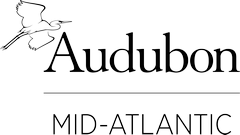This time of year, iconic species of terns and skimmers are returning to their breeding grounds along the Atlantic coast. They depend on critical nesting habitat throughout the Mid-Atlantic region, including islands within the Maryland Coastal Bays near Ocean City and Assateague Island. Encompassing a 30-mile stretch from Delaware to Virginia, this area, which includes the Assawoman, Isle of Wight, Sinepuxent, and Chincoteague Bays, was recognized in 2009 as an Important Bird Area for its support of globally significant populations of nesting terns, skimmers, and colonial waterbirds. Many of these island-nesting birds, however, are now experiencing a serious decline due to three main factors: erosion, disturbance, and predation – all of which are exacerbated by human activities.
Islands in the Coastal Bays are eroding more rapidly than ever. Currents no longer supply them naturally with new sand because breaches no longer occur in Assateague Island. And climate change is resulting in rising sea levels and an increase in the frequency and severity of storm events, further increasing erosion rates. Efforts to rebuild islands with sand dredged from boating channels have been infrequent, and rebuilt islands have not been protected from erosion. The newly created islands have washed away in as little as two years, in some cases with the wakes from boating activity exacerbating this erosion.
Terns and skimmers place their eggs directly on the ground where they are vulnerable to predators such as foxes, gulls and birds of prey. While the islands of the Coastal Bays provide a “safe haven” for nesting colonies free of mammalian predators, boats landing on the islands with visitors and dogs scare birds from their nests, exposing eggs and chicks to predation and the intense heat of the summer sun. Tragically, a single disturbance event can result in the loss of the entire reproductive effort of a colony.
As a result, populations of these beach birds have fallen drastically, including three species listed as Endangered in the State of Maryland. Since 1985, Black Skimmers have declined by more than 95% in Maryland. Common Tern populations reduced by 90% and Royal Terns by 78% over the past 16 years.
Historically, the Coastal Bays ecosystem was very dynamic with periodic breaches in Assateague Island providing new sand and sediment which naturally maintained islands in the bays. However, such breaches no longer occur, and eroding islands now simply disappear. In the past 25 years, more than 120 acres of islands have eroded away. Few of the islands that supported nesting colonies in 1985 remain today. Federal and state restoration efforts since 2011 have included the nourishment of Skimmer Island and channel maintenance dredging to create and restore four islands in the Coastal Bays. However, despite the best efforts of state and federal agencies, most of the rebuilt islands have again suffered from erosion in severe storms, particularly in 2017.
We know these island-nesting birds in the Coastal Bays are in trouble, and threats to these birds are intensified by human factors. However, human-based solutions are available and can help bring these birds back. Audubon and partners are currently working to develop a coordinated strategy to rebuild, restore, and protect nesting habitat while reducing human disturbance and the impact of predators. Innovative solutions, including artificial nesting structures, along with increased enforcement and public education and the potential creation of new nesting islands away from the Ocean City area will help spread out and save breeding populations. With will and resources, we can save Maryland’s iconic ‘beach birds’.







